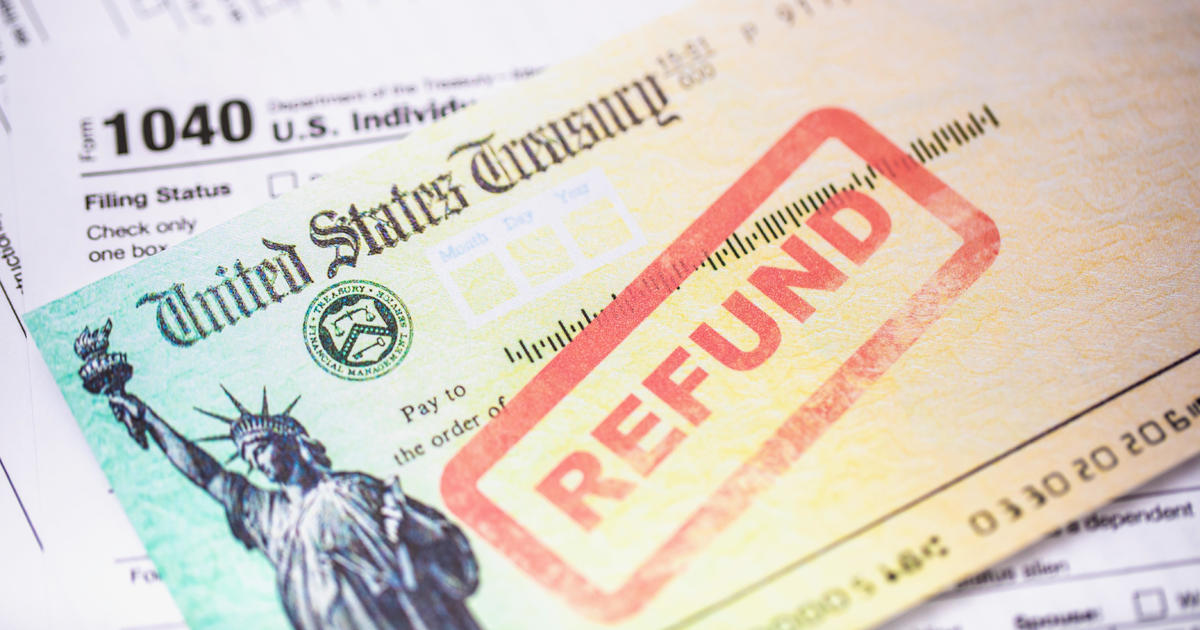The No. 1 thing Americans plan to do with their tax refund
By GOBankingRates/Andrew DePietro
The average income tax refund in 2016 was $2,860 — that’s some serious “extra” money you don’t want to leave on the table.
To find out how Americans plan to spend their refund, GOBankingRates conducted a survey. Respondents were asked the question, “What do you plan on doing with your tax refund?” and told to choose one out of seven possible answers:
- Pay off debt (loans, credit cards, etc.)
- Splurge on a purchase (TV, shoes, etc.)
- Put the money toward a vacation
- Put the money in savings
- Make a major purchase (car, home, etc.)
- I do not receive a tax refund
- None of the above
First, there are some caveats for these results. Twenty-one percent of respondents said they do not receive a tax refund, and the the most common response selected was “none of the above,” which was chosen by 32 percent of respondents. These people might not have a clear plan for their IRS tax refunds, they aren’t sure they will get a refund this year or they have plans for the refunds that are not found in the other responses.
This analysis focuses on the responses of less than half of survey takers, who chose one of the other five answers.
Most Americans say they will save their refund
Of those who do expect to receive a refund, the most common answer was to put the money in savings. More than 40 percent of respondents plan to use their tax refund to build their savings account. Considering nearly 70 percent of Americans have less than $1,000 in savings, according to GOBankingRates’ 2016 Savings survey, this could be a sign that Americans are vowing to improve their poor savings habits.
The median amount of credit card debt is $2,000, according to GOBankingRates’ 2016 Household Debt survey. Meanwhile, the median mortgage debt is just under $60,000 and the median student loan debt is around $9,000. Perhaps that’s why 38 percent of Americans plan to use their tax refund to get rid of debt.
Although most Americans plan to use their tax refunds to improve their financial situation, there are still some who want to have a little more fun with this highly anticipated windfall. Eleven percent of people said they will use their tax refunds to pay for a vacation, and 5 percent said they would put their refunds toward a major purchase, like a home or car. Another 5 percent plan to use the extra money for a splurge.
Millennials more likely to save and pay off debt
The age insights from this year’s tax refund survey demonstrate a strong emphasis on saving money and paying off debt — across all age groups. Whether young millennial or older baby boomer, paying off debt and putting money toward savings are the most popular answer choices.
This year’s survey also suggests millennials are using their tax refunds more responsibly. Last year, younger respondents were more likely to use their refund for splurges. This year, however, there is a startling difference.
Compared to other age groups, seniors who are 65 and over are more likely to splurge on a purchase, with 10 percent choosing this option versus 7 percent of millennials. Meanwhile, younger millennials (ages 18 to 24) are actually the most likely to save their tax refund. More than half (54 percent) said they will save their tax refund this year.
When it comes to paying down debt, older millennials (ages 25 to 34) are the most likely to use their refunds for this purpose, with over half of this age group selecting this answer. Gen Xers (ages 35 to 54) are the second most likely to utilize their refund as a strategy to eliminate debt.
Across age groups, the most popular way to spend a tax refund — in addition to saving it or paying off debt — is on a vacation. People ages 65 and older are more likely to use their refund to pay for a vacation, with nearly 20 percent of them choosing this option. That is a major change from last year when only a little more than 10 percent chose to put their money toward vacation.
For the most part, the older a respondent, the more likely he is to indicate they won’t be getting a refund this year. About 1 in 4 millennials (ages 18 to 34) doesn’t expect to receive a tax refund. Compare that to older generations: Nearly two-thirds of respondents ages 55 and over don’t expect to get a refund.
Men and women have similar plans
The most popular choices among both men and women are “put the money in savings” and “pay off debt,” suggesting that using tax refunds to be financially successful is important to most Americans.
The fact that more men and women want to use their tax refund for responsible purposes could indicate an increase in financial literacy among Americans. After all, according to another GOBankingRates survey, saving more money and spending less is one of the most popular financial resolutions for 2017.
However, it’s worth noting that men are much more likely to spend their tax refund on tangible items and women are more likely to use the money for an experience. The survey found:
- 7 percent of men and 3 percent of women chose “make a major purchase (car, home, etc.).”
- 6 percent of men and 4 percent of women chose “splurge on a purchase (TV, shoes, etc.).”
- 10 percent of men and 11 percent of women chose “put the money toward a vacation.”
The 99 percent plans to save; the 1 percent plans to splurge
Although “the 1 percent” usually refers to the ultra-wealthy, here it is just shorthand for the highest income group in our survey — those earning $150,000 or more a year. This income group puts up substantially different numbers than other groups. For example:
- The lowest income groups (earning $0-$49,999) are more likely to use their refund to pay off debt.
- Respondents earning $50,000-$149,999 are more likely to put their refund toward savings.
- Those making $150,000 or more are most likely to use their refund for a vacation or splurge on a purchase.
Not only are many lower-income respondents planning to pay off debt with their tax refund, but the lowest income groups chose “put the money in savings” as the second most likely choice.
Meanwhile, the “middle classes” and “upper-middle class” income groups — those earning $50,000 to $74,999, $75,000 to $99,999 and $100,000 to $149,999 — are also rather conservative with their refund. Across the board, more than 40 percent of all three of these income groups said they’d put their refund toward savings. If you want more evidence of fiscal responsibility, “pay off debt” is the second most popular answer among those three income groups.
Lastly, there are the high-income earners who make $150,000 or more in a year. Fewer respondents from this group chose to pay off debt or save their tax refund, but they were also lukewarm about going on a splurge — just 17 percent chose that answer. When it comes to using their refund for a vacation, however, the wealthiest income group chose this answer 50 percent of the time.
Methodology: GOBankingRates conducted this poll through a Google Consumer Survey from Jan. 19, 2017, to Jan. 21, 2017, and collected 1,000 responses. The poll posed the question, “What do you plan on doing with your tax refund?” and allowed respondents to select one of the following responses, which were displayed randomly: 1) “I do not receive a tax refund,” 2) “Make a major purchase (car, home, etc.),” 3) “Pay off debt (loans, credit cards, etc.),” 4) “Put the money in savings,” 5) “Put the money toward a vacation,” or 6) “Splurge on a purchase (TV, shoes, etc.).” The answer option “none of the above” was displayed last. This survey is representative of the online U.S. population with a margin of error of 3 percent.
This article, Here’s the No. 1 thing Americans will do with their tax refund, was originally published on GOBankingRates.com.
More from GOBankingRates:





